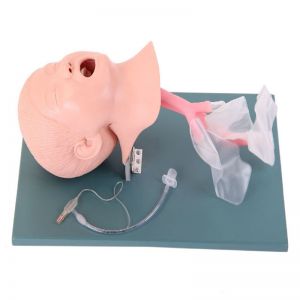Intubation is a vital skill in the field of children's first aid. It can establish ventilation channels for child patients in emergency situations, saving lives. Children's tracheal intubation model, as an auxiliary tool for teaching and training, is widely used in the training of first aid skills. However, using this model, is it really possible to master intubation skills?

First, we must recognize that the child tracheal intubation model does provide a platform for learners to simulate real intubation scenarios. Through repeated practice on this model, learners can become familiar with the steps of intubation, understand the anatomy of the trachea, and feel the feel and strength of the intubation process. This certainly gives learners a foundation to be more confident when facing real patients.
However, mastering intubation skills does not depend solely on model practice. In practice, we are dealing with a living child patient, whose physiological condition, severity of illness, and degree of cooperation will affect the intubation process. Therefore, in addition to practicing on models, learners also need to accumulate experience and improve their skills through practical clinical operations.
In addition, intubation skills also require learners to have a wealth of medical knowledge and clinical experience. They need to understand the physiological characteristics of pediatric patients, pathophysiological processes of the disease, and intubation strategies and precautions in different conditions. This knowledge cannot be acquired through simple model exercises, but needs to be gradually accumulated through systematic learning and clinical practice.
Therefore, we can say that children's tracheal intubation model is an important tool for learning and mastering intubation skills, but it is not a panacea. In order to truly master intubation skills, learners also need to achieve through systematic learning, clinical practice and continuous accumulation of experience.
In conclusion, the child tracheal intubation model provides a valuable practice platform for learners, but it cannot completely replace the actual clinical operation and experience accumulation. To truly master intubation skills, learners need to use a variety of learning resources and practical opportunities to continuously improve their medical knowledge and clinical experience. In this way, when facing real child patients, they can complete the intubation operation more confidently and accurately, and escort the life of patients.

